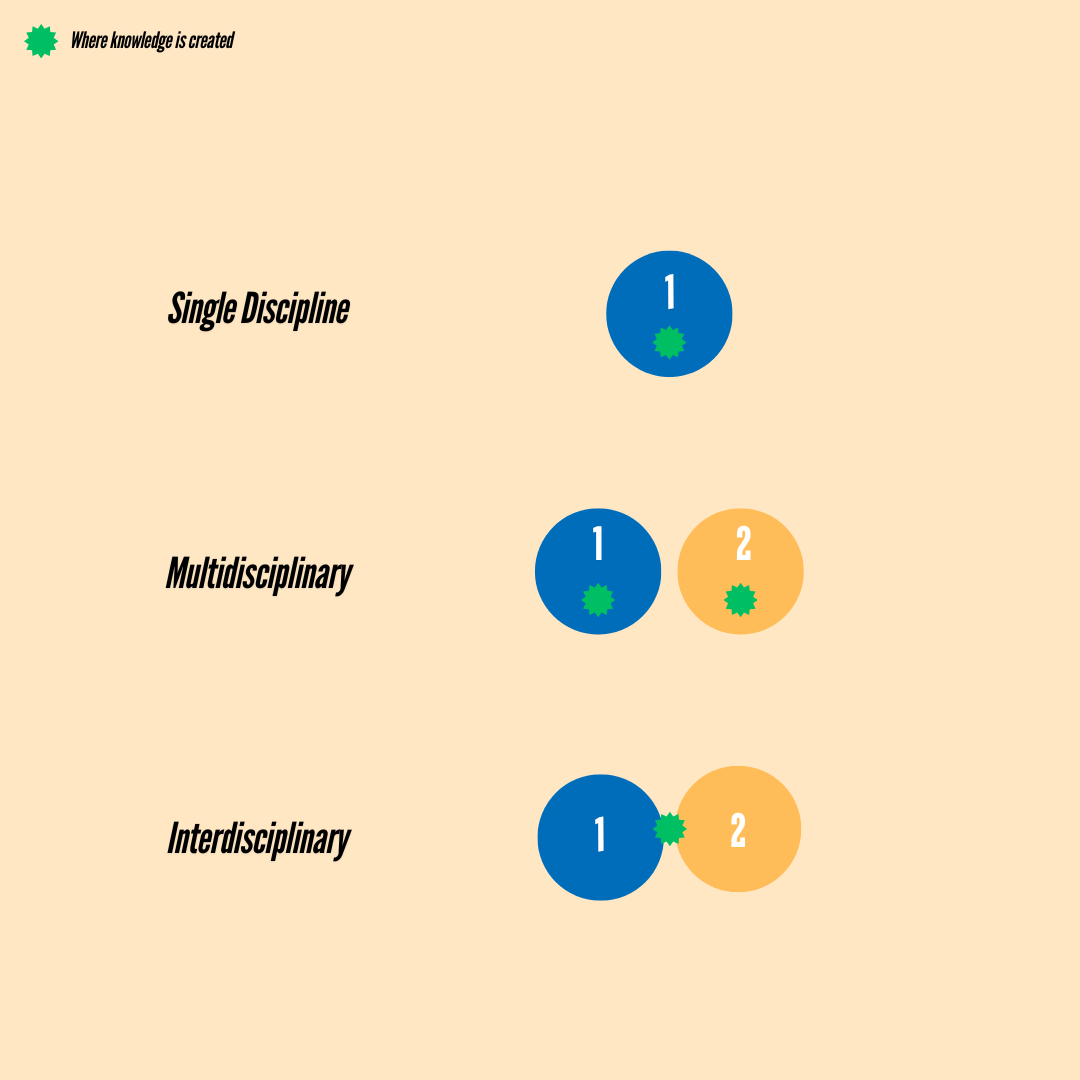
Breaking Down Silos: Why Interdisciplinary Work Solves Wicked Problems
As companies grow, it’s natural for leaders to group people into disciplines, roles, or functions. You are that role, I am this. You do that, I do this. Departments form, job families grow, and different disciplines work side by side to deliver value. Functions are often financially separated and governed — some as costs, some as value generators — all needing to be “accounted” for.
Before long, people are siloed into specific categories. Domain-specific approaches form, along with unique terminology, knowledge, and ways of working. It all seems simple, but this structure creates inevitable problems.
Why Silos Cause Problems
- Customer Value Crosses Boundaries: Almost all customer-facing work requires contributions from multiple disciplines. Few roles deliver value alone. Success depends on teams working together across these boundaries.
- Red Tape and Systemic Gaps: As companies grow, gatekeeping and process gaps emerge. Problems are passed between disciplines, becoming ingrained in the system itself. Over time, these “systemic problems” become harder to solve.
- Symptom-Focused Solutions: Teams often tackle the visible, easy-to-fix symptoms rather than root causes. This creates more problems, making work overly complex and clarity scarce.
- Discipline-Specific Solutions Fail: Leaders may assign parts of a systemic problem to relevant disciplines — Tech handles technology issues, Product handles product problems, and so on. Each discipline applies its expertise, but the holistic problem remains unsolved.
Wicked Problems
Systemic problems are often “wicked problems,” a term popularised by Horst Rittel and Melvin Webber in 1973. Wicked problems are interconnected, complex, and resistant to simple solutions. They grow richer and harder to solve over time.
Even small problems can be wicked if they cross functions, departments, or organisational levels. Yet, they also represent huge opportunities: to improve the business, release agility, enhance the workplace, and help teams deliver more value.
Wicked problems cannot be solved by a single team or individual. They require an interdisciplinary approach, leveraging the skills, perspectives, and creativity of multiple disciplines within the business.
Putting People in Boxes Limits Solutions
We often package people — and their knowledge — into boxes. You are this role, I am that. You are there, I am here.
But the biggest challenges rarely belong to a single discipline; they exist in the gaps between roles, departments, and functions.
When we try to solve problems using single-discipline solutions, we lose:
- The breadth of knowledge from different perspectives
- Diverse approaches, creativity, and critical thinking
- Opportunities to combine analysis, technology, and insights
- The chance to generate new knowledge and methods
This is why interdisciplinary problem solving is essential.
Solving Problems Generates Knowledge
Problem-solving isn’t just about fixes—it creates knowledge:
- How the problem happened
- How to approach similar problems in the future
- New methods, processes, and insights
- Better understanding across disciplines
When different people work together, knowledge spreads across the organisation, building capability and competitive advantage.
Disciplinary Approaches Explained
- Single Discipline: One person or role addresses a problem. Works for domain-specific issues but fails for systemic challenges. Example: Assigning the delivery problem to Tech alone yields a narrow, one-dimensional solution.
- Multidisciplinary: Two or more disciplines collaborate but focus only on their piece of the problem – from their own discipline perspective. Input is provided, then each returns to their work. Learning and solutions remain largely siloed. Example: A designer looks at the design, and the tech folk look at the tech.
- Interdisciplinary: The magic happens here. People from different disciplines tackle the entire problem together. They combine knowledge, methods, and creativity to generate holistic solutions.

Example: Improving delivery in a large company I worked with: Sales, Marketing, Legal, Tech, and Design all came together on the full problem. Solutions emerged from the mashup of expertise, rather than isolated contributions.
New knowledge and approaches were created at the intersection of disciplines. In other words, a new way of working and approaching the delivery emerged from this activity – something we wouldn't have achieved if only one or two disciplines had tried to solve it.
👉 Ready to move faster towards your business goals while building a workplace people love? I help managers and leaders get there—through coaching, consulting, and training. See how I can help you.
Personal Multi- and Interdisciplinary Learning
I personally avoid reading only domain-specific or management books. I read across marketing, engineering, biology, communication, and more. This multidisciplinary learning feeds an interdisciplinary approach to my work.
Similarly, when teams combine disciplines, they:
- Learn from each other
- Share new methods and approaches
- Solve problems creatively and effectively
- Build organisational knowledge and capability
Beyond Problem Solving
Interdisciplinary work isn’t just for tackling “wicked” problems. It bridges gaps between departments, improves collaboration, and enhances value delivery. The greatest opportunities for competitive advantage exist between disciplines — not within them.
Leaders must encourage collaboration, set aside politics, and allow teams to take on the tough, rewarding challenge of solving systemic problems together.
Conclusion
Next time you face a problem, ask yourself: Can a single discipline solve this? Or should we bring together perspectives, expertise, creativity, and motivations from multiple disciplines? The answer is usually the latter.
Interdisciplinary approaches unlock opportunity, solve wicked problems, and make organisations smarter, faster, and more agile.
Bibliography
[1] ‘Wicked problem’, Wikipedia. Mar. 05, 2025. Accessed: Mar. 11, 2025. [Online]. Available: https://en.wikipedia.org/w/index.php?title=Wicked_problem&oldid=1278927784
